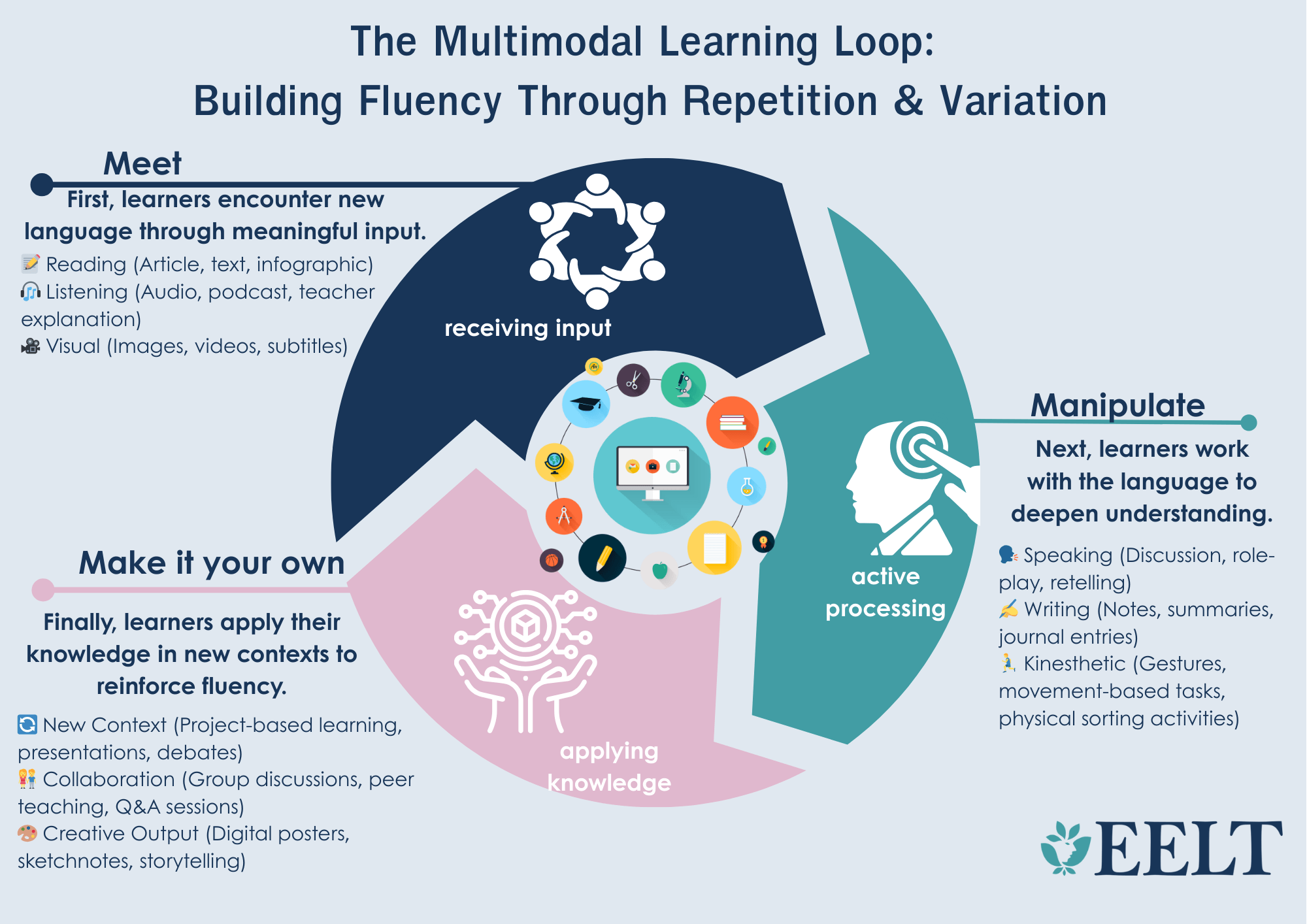In language learning, fluency isn’t just about knowing words and grammar, it’s about being able to use language across different skills and contexts with ease. One of the most effective ways to build this fluency is through a multimodal approach, where learners repeatedly engage with language through different modes: listening, speaking, reading, writing, and movement.

Why a Multimodal Approach Works
Unlike outdated ‘learning styles’ theories that suggest learners should only work in their preferred mode (e.g. visual or auditory), a multimodal approach ensures that all learners benefit from varied and repeated exposure to language. Each mode strengthens different aspects of processing, supporting deeper learning and retention.
For example, when encountering new vocabulary, learners might:
See it in context in a reading passage (reading mode)
Hear it in a dialogue or a teacher’s explanation (auditory mode)
Say it aloud in a conversation or role play (speaking mode)
Write it in a summary or reflection (writing mode)
Use gestures or movement to reinforce meaning (kinaesthetic mode)
Each interaction reinforces the language in a new and complementary way, making it more likely to stick.
Repetition with Variation: The Key to Fluency
Repetition alone isn’t enough; varied repetition is what builds fluency. If students simply hear a word once and repeat it in the same way, their understanding and ability to use it remains limited. Instead, when they re-encounter the word across different contexts and modes, they deepen their ability to retrieve and use it naturally.
For instance, a multimodal lesson on comparatives might look like this:
Listening: Hear a short conversation comparing two cities
Reading: Read a travel blog using comparative structures
Speaking: Discuss their own experiences using comparatives
Writing: Write a short comparison of two places they know
Kinaesthetic: Use physical objects to compare size, shape, or quantity
By revisiting the same language through different channels, learners move from recognising language to confidently producing it in meaningful contexts.
Practical Ways to Implement a Multimodal Approach
Whether you teach English as an additional language (EAL), English as a foreign language (EFL), or content-based subjects in English, here are some ways to incorporate a multimodal approach:
Loop Input: Model the approach within your teaching by using multiple modes yourself—introduce a concept visually, reinforce it through discussion, and have learners manipulate the information through a task.
Layered Tasks: Design activities where learners process the same content through different skills. For example, after reading a text, have them summarise it orally, then create a graphic organiser before writing a reflection.
Tech and Media Integration: Use videos, infographics, audiobooks, and interactive tools to provide varied input and output opportunities.
Drama and Role Play: Encourage movement-based learning by having students physically act out scenarios, reinforcing spoken and written language.
Collaborative Learning: Have students engage in pair and group tasks that require switching between listening, speaking, reading, and writing.
Final Thoughts
Fluency isn’t built through single-exposure learning; it’s developed through meaningful repetition across different modes. A multimodal approach not only supports diverse learners but also reflects how language is naturally encountered and used in real life. By engaging students in tasks that require multiple interactions with language across different skills, we help them move from passive understanding to active, confident communication.
And because learning is a loop, not a straight line, each new stage of production reveals areas for further input—keeping the process dynamic and ensuring continuous progress.

Very good https://is.gd/tpjNyL
Very good https://is.gd/tpjNyL